Will A Tokina F/2.8 Work On A Full Frame Camera
The best lenses for astrophotography in 2022: fast ultra-wide lenses for the night sky
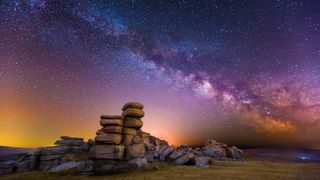
With the best lenses for astrophotography, you can bring the stars and nighttime skies to life similar never before. Astrophotography isn't every bit hard as you might think, merely it is a discipline that requires the correct kit – as well equally a tripod and a camera with a decent-sized sensor, you need a wide-angle lens with a wide maximum aperture.
Why a wide-bending? You want to be able to capture every bit much of the sky as possible, and a broad focal length will ensure the broadest possible perspective. Y'all can utilise a zoom or a prime; a focal range of about 14-20mm is all-time (in full-frame terms, and so that'due south about 10-14mm on APS-C or vii-10mm on Micro Four Thirds).
A wide aperture is also necessary to allow the sensor to beverage in equally much light as possible, and so that you can keep the ISO low and the shots clean. Using slow shutter speeds is as well necessary for this, which is why you need that tripod we mentioned. We could say more, but check out our astrophotography tips and how-to guides if you need more tips.
We've divide our guide into sections. First up nosotros run through our favourite astrophotography lenses for multiple mounts, then we have specific sections for Canon, Nikon, Sony and Fujifilm shooters. Simply whatever arrangement you lot're using, chances are practiced yous'll be able to find a skilful astrophotography lens on this list.
Now let'southward get to the best lenses for astrophotography!
Best lenses for astrophotography
Best multi mount lenses for astrophotography
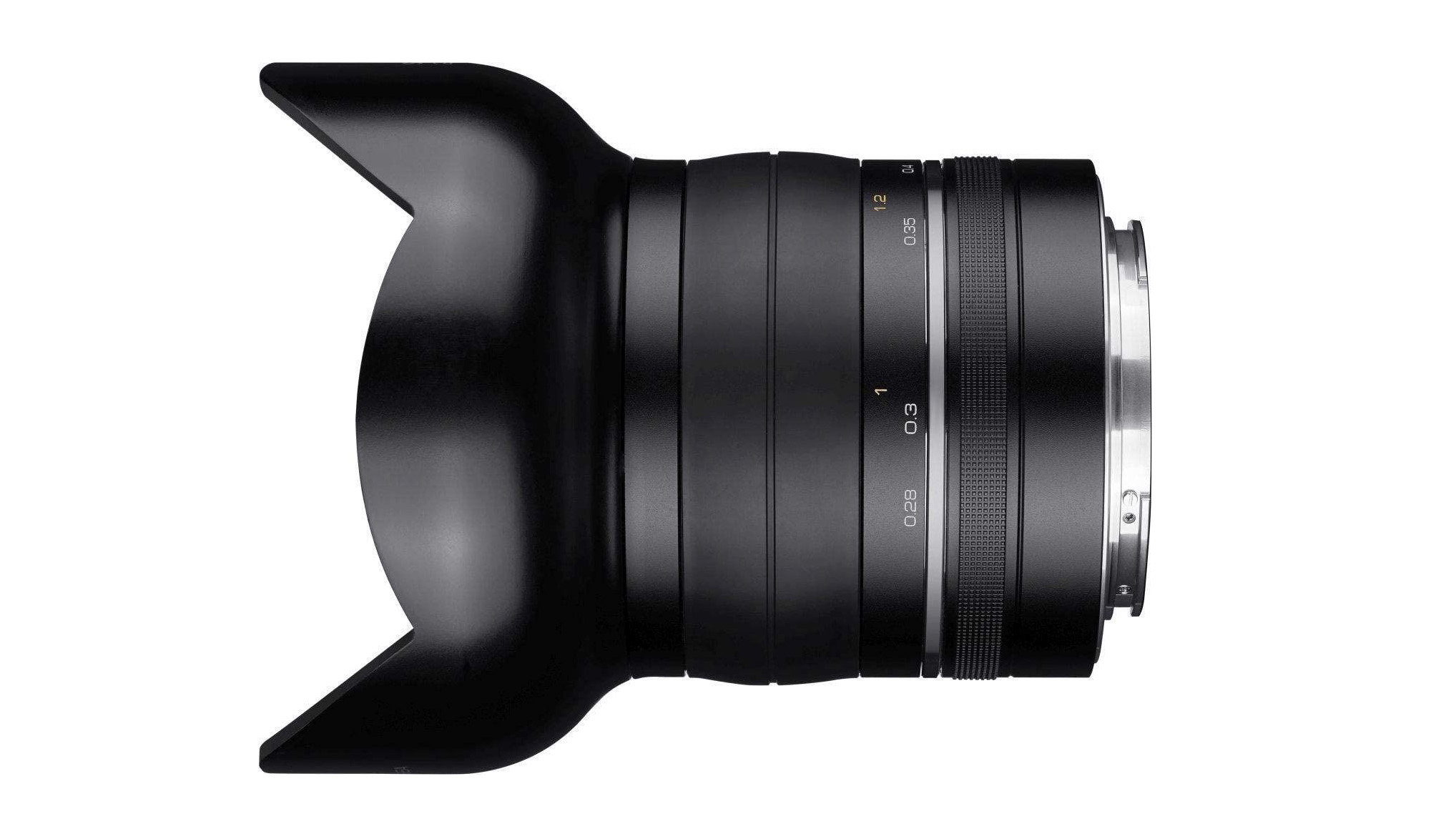

From Korean manufacturer Samyang's XP stable of premium manual-focus prime lenses for Canon and Nikon full-frame cameras, this 14mm f/ii.4 is the most ideal for astrophotography. The lens is sold equally the Rokinon SP 14mm f/2.4 in North America. The high-quality drinking glass is neatly wrapped in a really solid casing. The rubberized manual focus ring gives a very bodacious grip and has a long rotational travel with a fluid feel. In that location'southward no weather-seal ring on the mounting plate to guard against the ingress of grit and wet. To be fair, though, if yous're photographing the Galaxy, you'll need clear, dry and dust-free conditions.
In our review, we were hugely impressed past how well this lens maintained its image quality when wide open, which is hugely important for astrophotography. It's markedly better than Irix'due south rival 15mm f/two.4 Blackstone lens or a Sigma 14mm f/1.8 DG HSM Art. Sharpness is both very good and extremely consistent across the image frame. Chromatic aberrations are negligible, while coma and astigmatism are very minimal. Barrel distortion tin can be visible at shut focus distances, but that'due south non an event for astrophotography.
Maintaining first-class image quality a lens' widest aperture for astrophotography is a real challenge in an ultra-broad-angle optic, but this Samyang does exactly that – an admirable achievement.
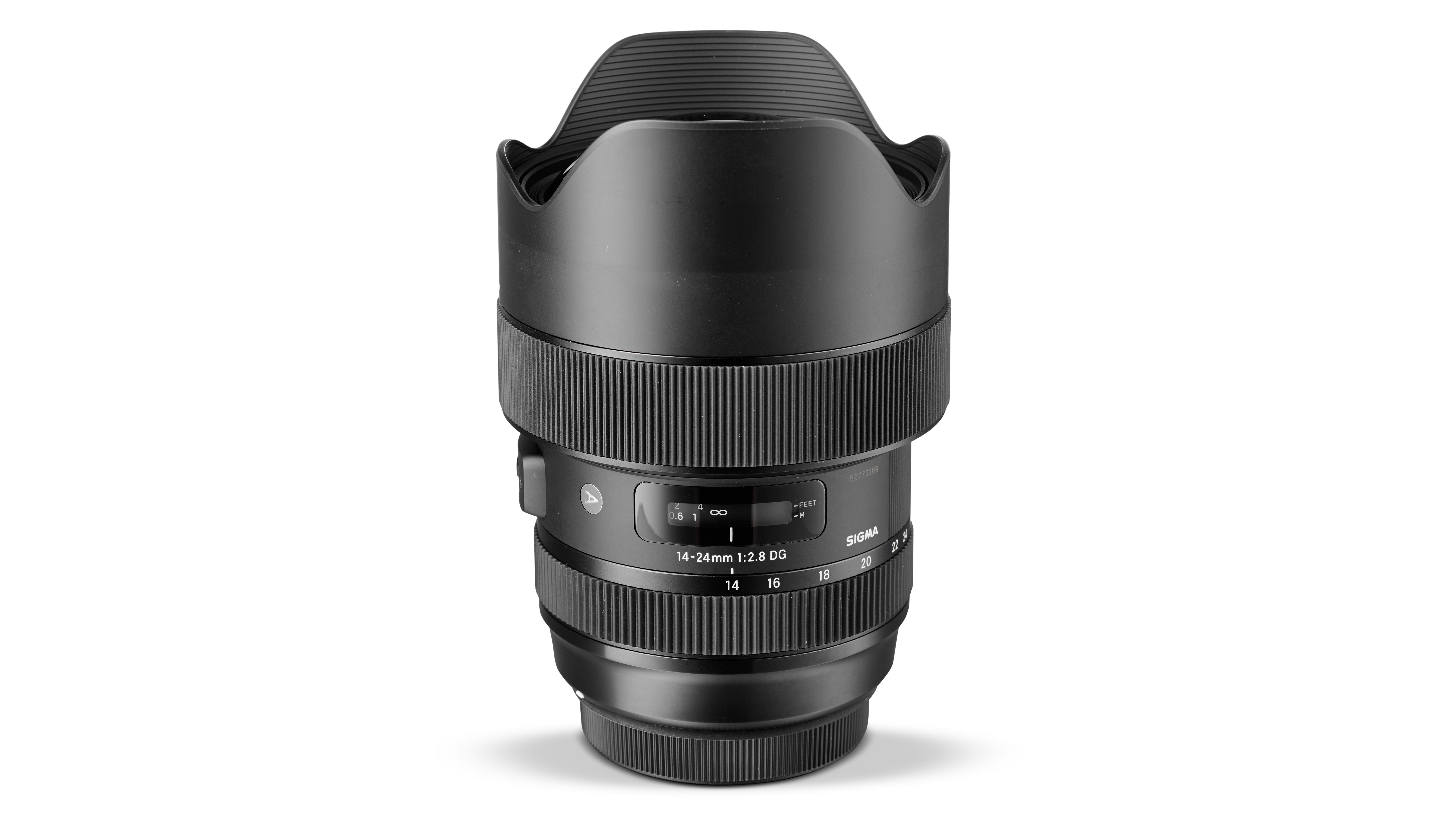

Available in Catechism EF and Nikon F mounts, this Sigma lens is up against own-brand legends like the Canon EF 16-35mm f/2.8L USM III and the Nikkor AF-S 14-24mm f/2.8G ED. It beats both of them for image quality and cost. Build quality and handling are fantabulous, with a full gear up of weather-seals and a fluorine coating on the forepart element. The lens is too compatible with Sigma'due south optional USB Dock for customisation and firmware updates.
In our review, we found we could produce images with this lens that were nothing short of outstanding. Even at the shortest focal length with the widest aperture, sharpness is excellent across the entire frame, and the lens does very well to retain splendid corner sharpness at broad apertures. Vignetting is remarkably minimal and though barrel distortion is prominent at close range, it'south negligible for astrophotography. Lateral and spherical aberrations are as well very well controlled.
For total-frame Canon and Nikon DSLRs, this is only the best ultra-wide, fast-aperture zoom lens on the market, and not just for astrophotography.
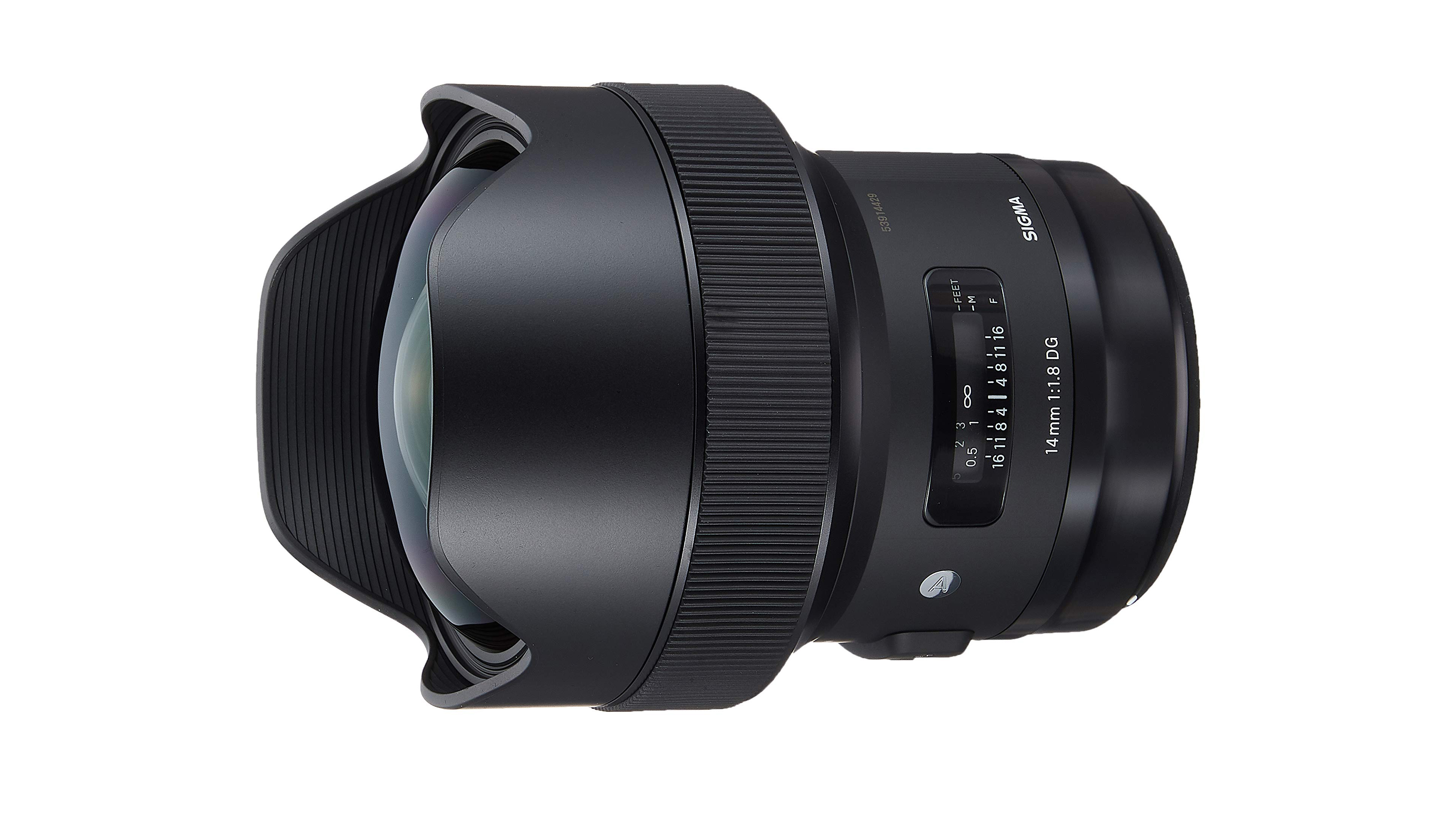
This recently launched total-frame compatible prime lens for Canon and Nikon DSLRs, as well as Sony East-mount cameras is a full f/stop faster than about other lenses on this list, and information technology includes super-speedy band-type ultrasonic autofocus. The wide discontinuity comes at a cost, even so: the large-diameter elements required are not but more expensive to make, they as well result in a insufficiently big and heavy build.
At least this lens is also big on operation. When we reviewed the lens we found the image quality to exist fabulous, with exceptional sharpness for such a fast-discontinuity lens with an ultra-broad viewing bending. As impressive are contrast, colour rendition, and the absence of spherical and lateral chromatic aberrations. At that place is very noticeable coma and astigmatism towards the corners of the image frame, simply get downwardly one cease and these virtually disappear, making overall image quality for astrophotography altogether first-class.
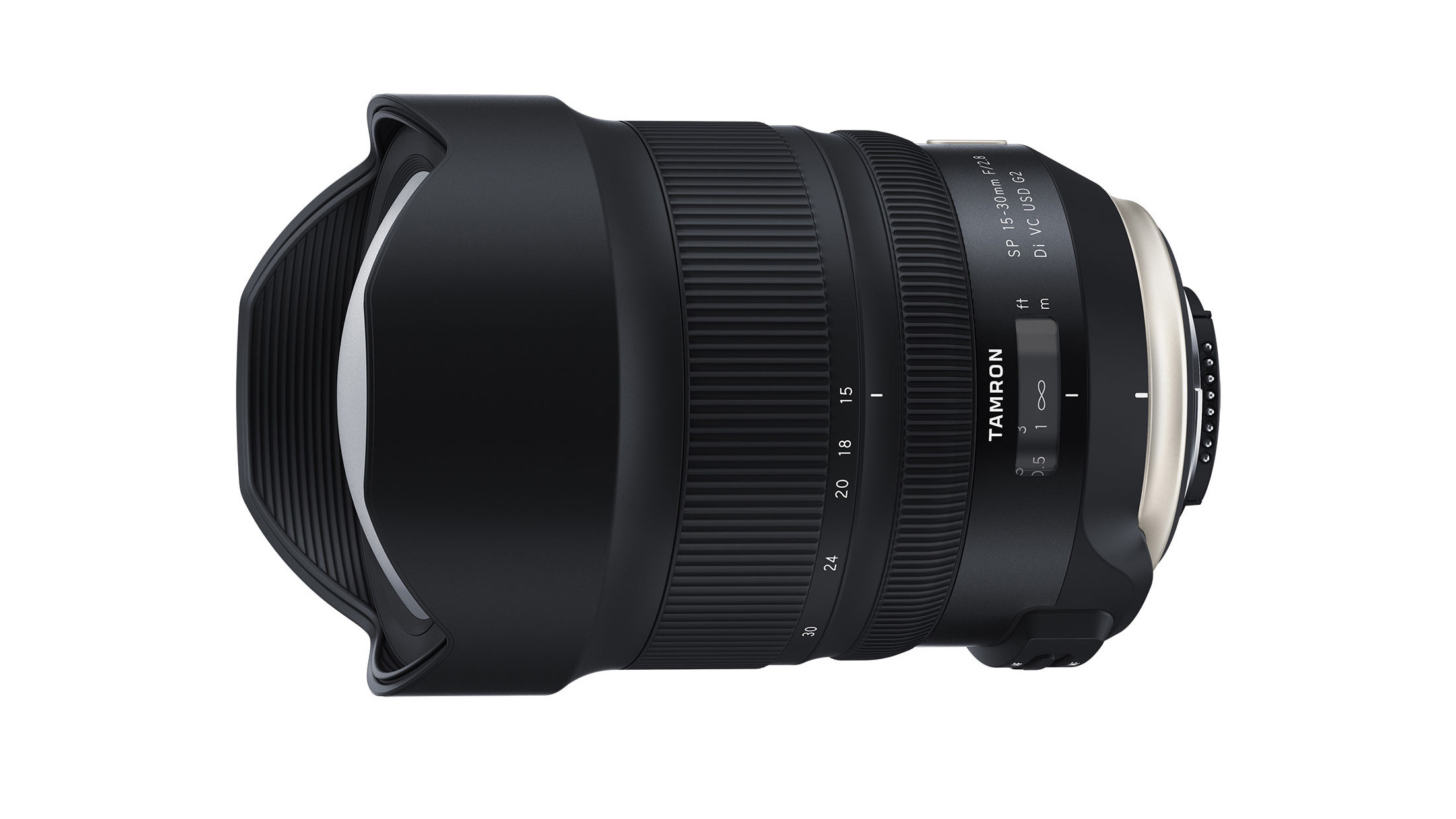
Unusually for a wide-angle zoom lens designed for Canon or Nikon DSLRs, this Tamron includes an optical stabiliser, with 4.5-end effectiveness. That's useful at sunset or indoors, but of zero benefit for long exposures in astrophotography, where it's best switched off. Though there's little change in the optical line-up, this updated G2 lens revision gains an additional anti-glare coating and a more than durable fluorine coating on the front chemical element. Unlike some similar zoom lenses, this Tamron has a large zoom ring at the front and a relatively small focus band at the rear.
The lens delivers impressively little barrel distortion and vignetting at its shortest focal length. At 15mm from f/ii.eight to f/four, sharpness is lacklustre exterior the fundamental region, but otherwise fantabulous. There's also a niggling more than coma and astigmatism towards the corners of frame, while barrel distortion is average at close range and minimal for astro shooting.
Having given the lens a thorough testing in our review, we feel comfortable maxim that the Tamron SP 15-30mm f/2.viii Di VC USD G2 is a solid performer and an improvement over the original. Its image stabilisation system works well for general use, though it isn't of whatsoever do good for astrophotography.
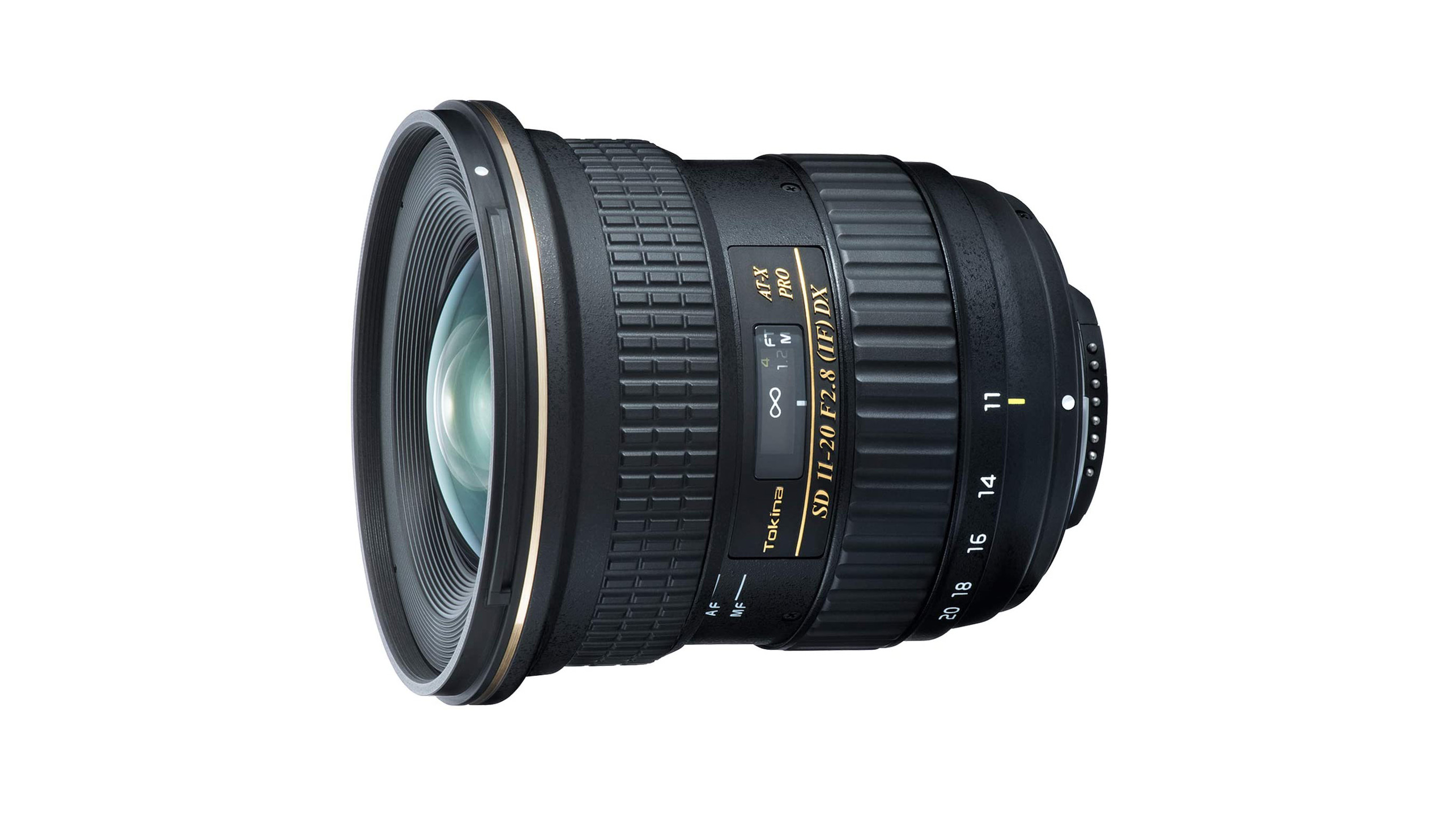
Ultra-broad zoom lenses with fast aperture ratings for APS-C format Canon and Nikon cameras are few and far betwixt. The main competitor to this lens is Tokina's ain AT-X 14-20mm f/ii AF Pro DX, which is a little pricier and has an even faster aperture rating. Nonetheless, its maximum viewing angle is a little restrictive compared with this 11-20mm lens. The autofocus system feels basic, powered by a rather noisy electric motor. Build quality feels very solid and robust though, and the zoom and focus rings operate smoothly.
In testing, we constitute that Tokina's corner sharpness does drop off somewhat at the short end of the zoom range when using the widest aperture. Nonetheless, vignetting and spherical abnormality are well controlled, and there's little coma and astigmatism. Barrel distortion is unusually well-controlled at the short end of the zoom range, and negligible at the long terminate.
If yous're after a zoom lens for APS-C format astrophotography on a Canon or Nikon DSLR, this is the best overall choice – merely Tokina's xiv-20mm f/2 besides works well.
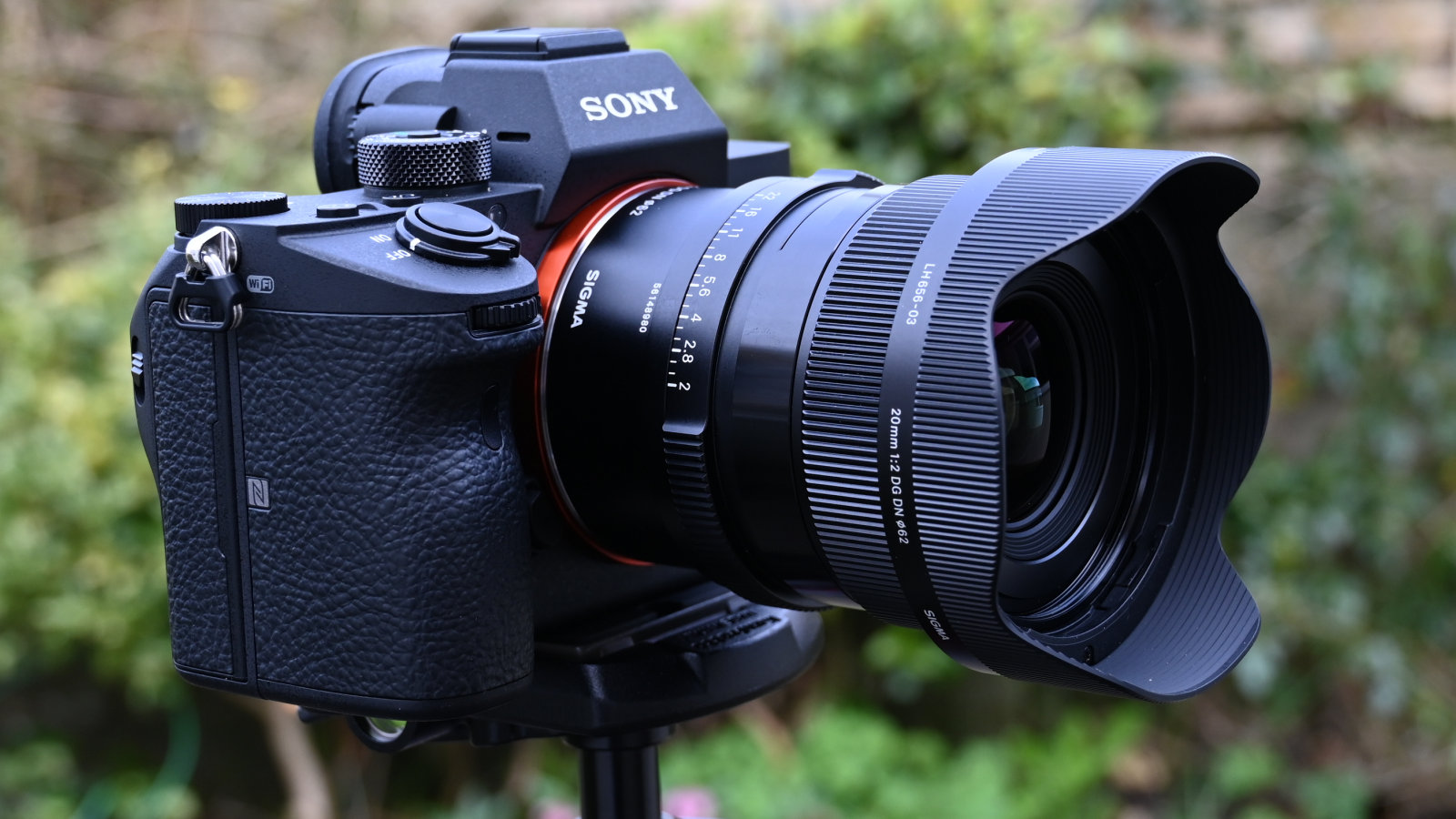
This is the widest lens in Sigma'due south growing range of I-series primes for Sony E-mount and Leica 50-mountain, and it'southward a solid choice for astro work. The optical path of the lens is especially impressive, especially because how small the lens is – 13 elements are somehow crammed in at that place, including three high-precision drinking glass-molded aspherical elements, one SLD (Special Low Dispersion) element and ane FLD (Fluorite Low Dispersion) element. Then there's also Sigma's Super Multi-Layer Coating and Nano Porous Blanket.
Therefore, as you might expect, the Sigma 20mm F2 DG DN | C performed very well in our testing, delivering excellent sharpness. We establish that vignetting was a little severe when used at wider apertures than f/v.6, and there is some distortion that will require cleanup in software, but nothing ruinous.
The 'C' or 'Contemporary' designator means it's a lightweight and portable lens – though this doesn't thing as much for astrophotography every bit information technology does for other disciplines, as you're e'er going to be tethered to your tripod. Withal, the metallic construction is pleasingly solid, and the addition of an aperture band is welcome.
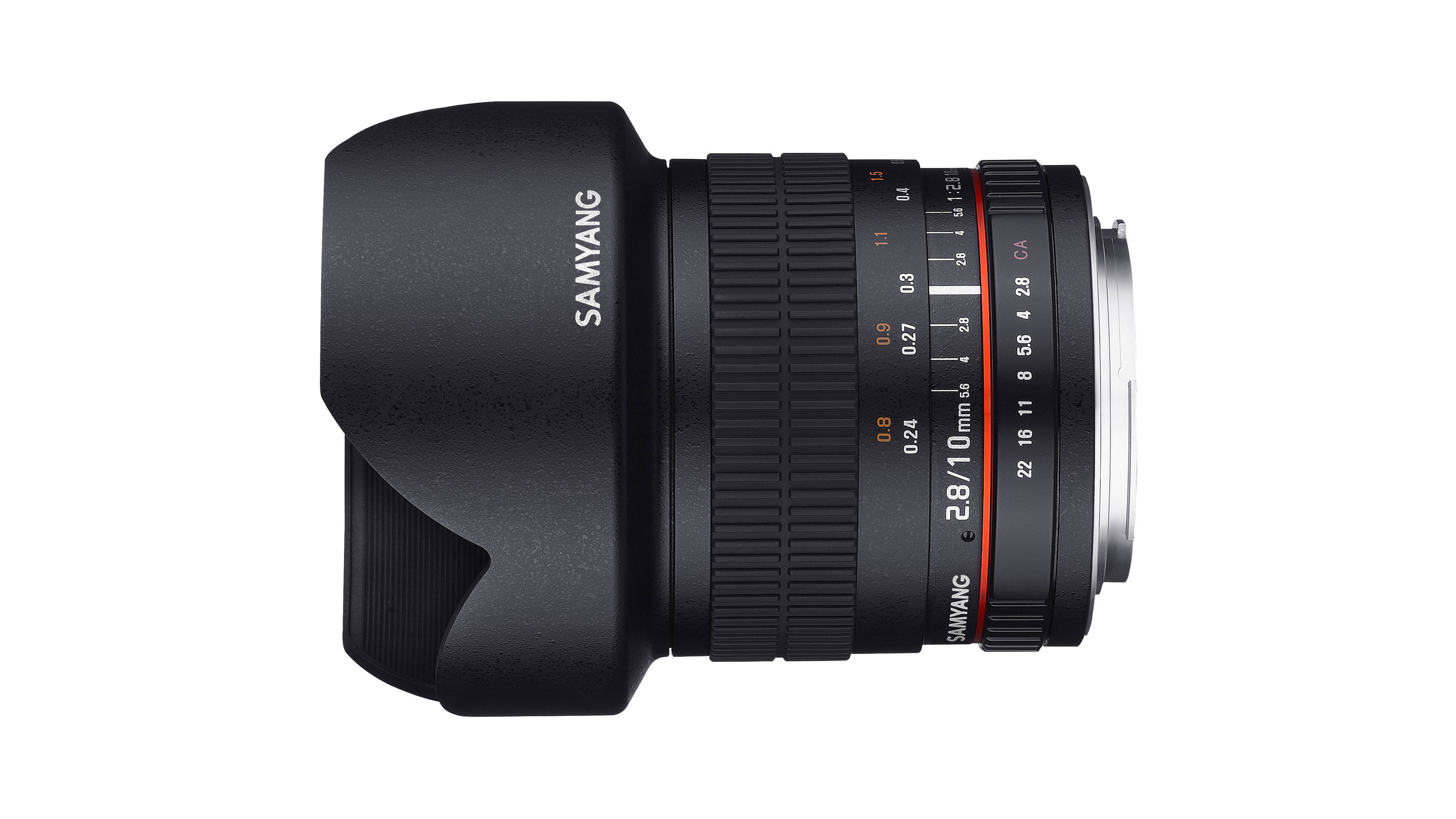
This manual-focus Samyang has an astro-friendly 'effective' focal length on crop-sensor cameras, ranging from fifteen-16mm on APS-C format bodies to 20mm on Micro Iv Thirds. It'southward available in many mount options, but only the Nikon fit has built-in electronics. This enables the aperture to be prepare from the camera. Compared with well-nigh prime number lenses for crop-sensor cameras, this 1 is unusual in combining a wide viewing angle with a fairly fast f/ii.8 discontinuity.
Manual focusing is precise and bodacious. Build quality feels solid, just there are no weather-seals. Performance is skillful in terms of coma, spherical aberration and vignetting, helping stars to retain their natural shape across the image frame, fifty-fifty when shooting broad-open at f/2.8. Sharpness isn't fabled, however, but it doesn't drop off much towards the edges of frame. Colour fringing tin be more noticeable than usual towards the prototype corners, and there's a adequately typical amount of barrel baloney for this type of wide-angle prime number.
This lens works well for Micro Four Thirds and APS-C format astrophotography, where the lack of autofocus isn't really a drawback. It's cracking value at the price.
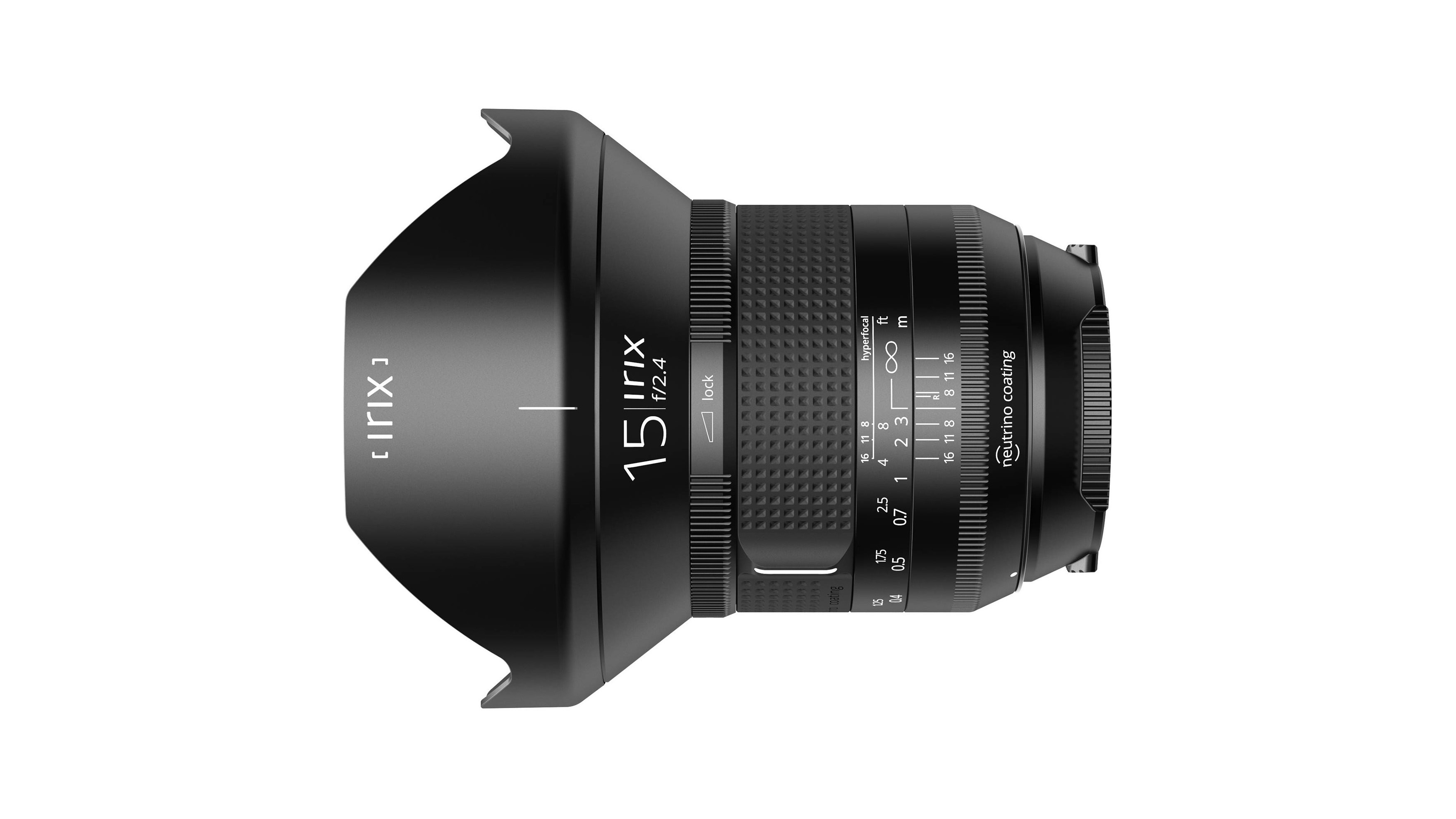
Designed in Switzerland and congenital in Korea, the full-frame uniform Irix 15mm is available in Firefly and Blackstone options. They're optically identical, just the Blackstone has a magnesium alloy rather than plastic casing, four conditions-seals instead of iii, and fluorescent engraved markings for easy reading.
The lens is satisfying to operate, equally we noted in our review. Equally a manual-focus lens, the focus ring has a polish, precise operation and feels absolutely impeccable. A secondary band enables y'all to lock the focus ring at any position. Another squeamish bear on is that you can fine-tune the focus ring and then that the distance scale is calibrated to your camera body.
Epitome quality is excellent, with minimal aberrations. Sharpness is fantabulous across most of the frame, fifty-fifty at the widest discontinuity. Vignetting isn't too bad at f/two.4, only coma and astigmatism are pronounced, giving an irregular shape to stars. Both factors are improved by narrowing the discontinuity past an f/cease though.
This is a great broad-angle prime for general shooting, and comes at a very bonny price. Coma and astigmatism at the widest aperture are the merely spoilers for astrophotography.
Best Canon lenses for astrophotography
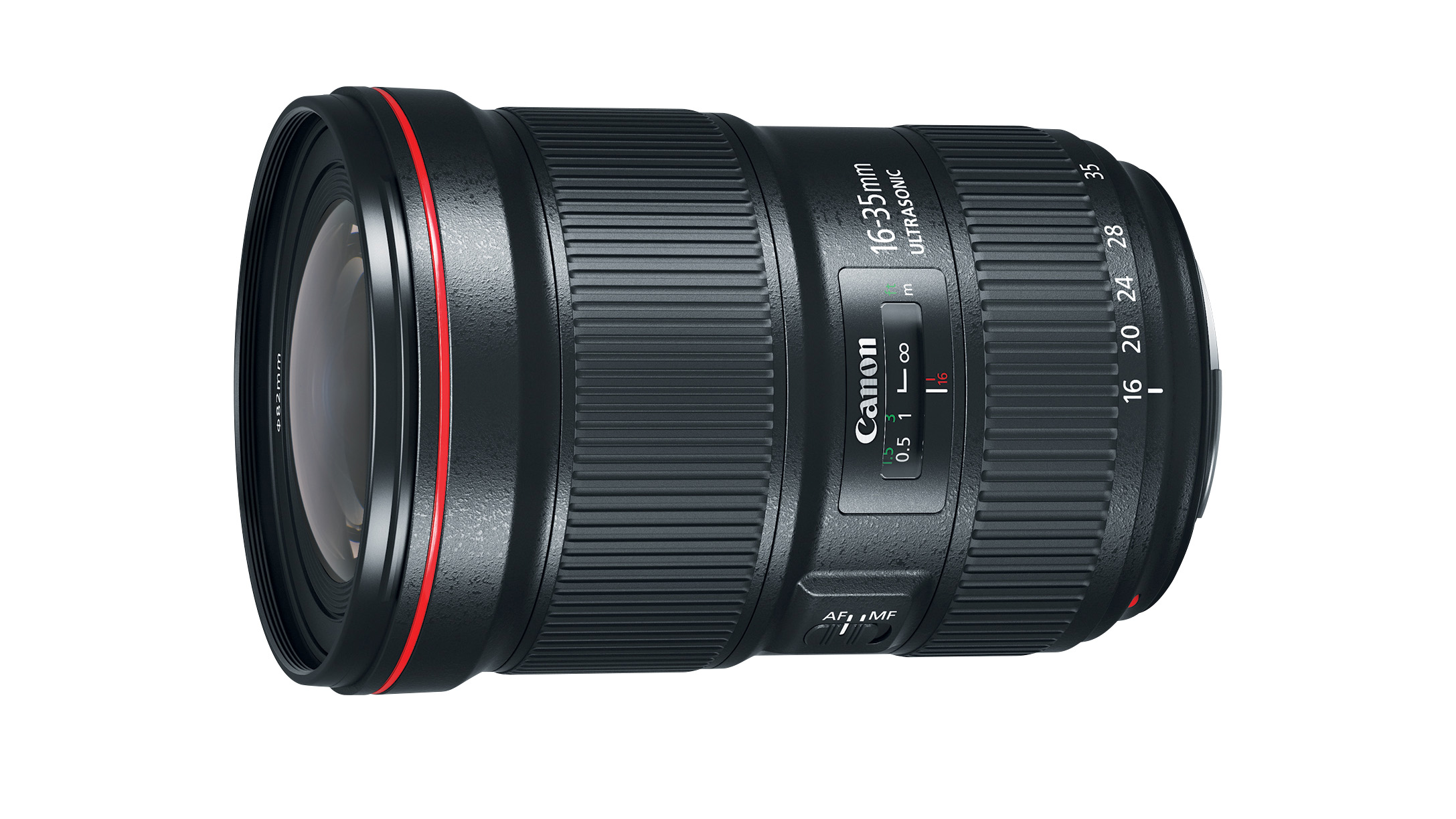
If y'all ain a total-frame Canon DSLR, this is Canon'south most ideal zoom lens for astrophotography. It may not be as wide-bending as the company'south EF 11-24mm f/4L USM, but it's an all-of import f-stop faster. The maximum viewing angle is admittedly slightly less than the 14mm and 15mm full-frame on this listing, equating to 108 degrees compared with 114 or 110 degrees.
This lens gains a large and circuitous double-surface GMO (Glass Moulded) aspherical chemical element at the front end, adding to two UD (Ultra-depression Dispersion) elements and a basis aspherical element at the rear. Upgraded, high-tech coatings include both SWC (SubWavelength Coating) and ASC (Air Sphere Coating) for greater resistance to ghosting and flare. Weather-resistant attributes are extended to include moisture- and grease-repellent fluorine coatings on the front and rear elements. The lens is quite long at 128mm, considering that it doesn't have a congenital-in fixed hood. Unlike with some rival lenses, the dissever bayonet-fit hood enables the easy zipper of filters, via an 82mm thread. Build quality is upwardly to Catechism'southward usual robust L-serial standards.
We tested the Canon EF 16-35mm f/ii.8L USM III in our lab, and found sharpness and dissimilarity to be exceptionally impressive beyond the zoom range. The Mk Three has much-improved corner sharpness compared with the previous edition, but however lags behind the competing Sigma xiv-24mm zoom. There's very little spherical aberration at f/ii.eight, simply coma and astigmatism can be quite visible near the extreme corners of the frame.
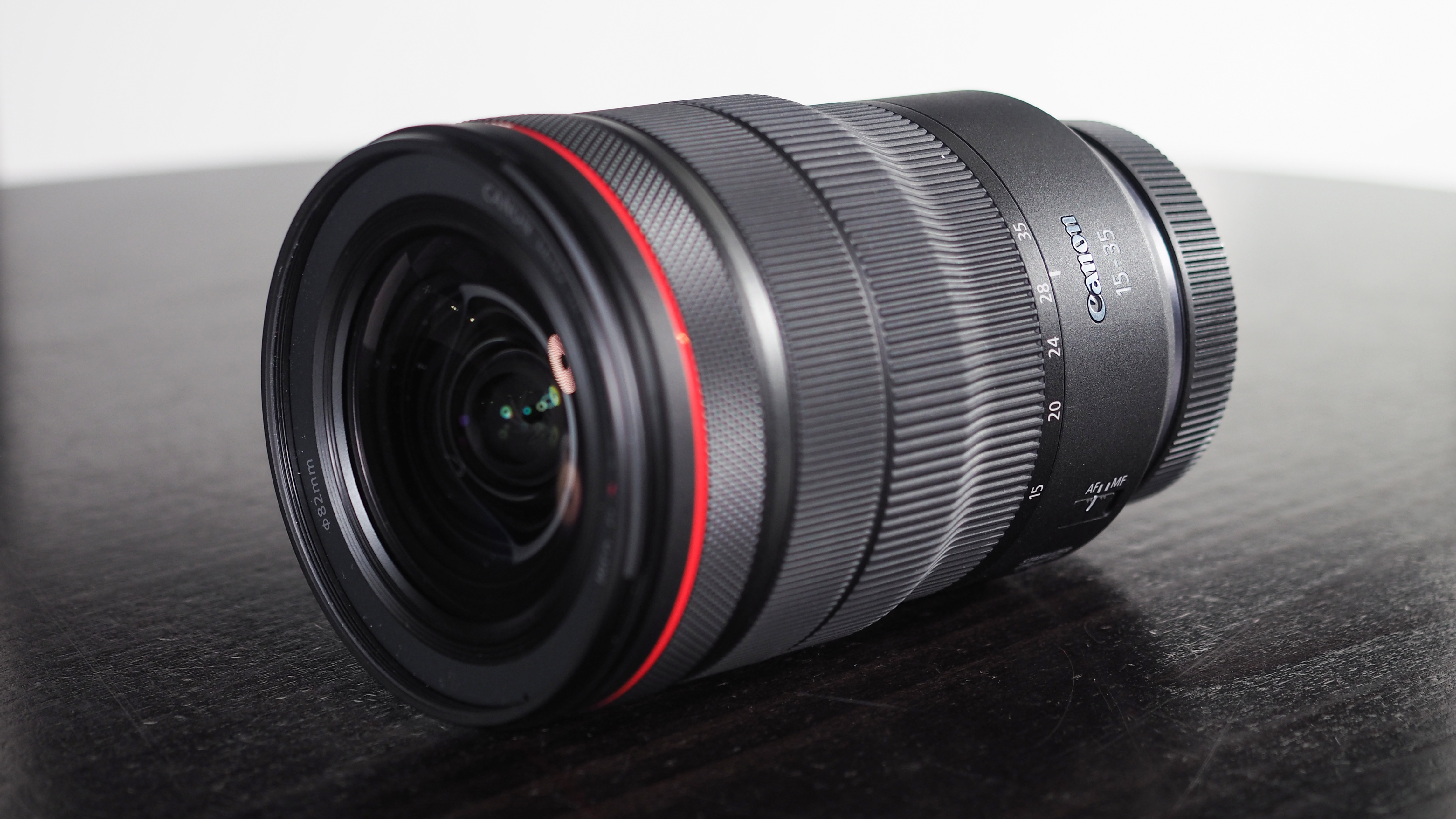
If yous've got an EOS R5 or R6 and want to do astrophotography, this is the dedicated lens for you. It'south no surprise when you look at the focal range and maximum aperture available to find out that this is a big and heavy lens. Information technology just about balances okay on one of Catechism's mirrorless cameras, but should be less of an upshot for astrophotographers. A nice touch is the separate hood that means it'due south possible to attach filters if desired via an 82mm filter thread, while there'due south likewise congenital-in IS.
We plant the focusing functioning of the Canon RF xv-35mm f/2.8L IS USM to exist brilliant in testing, with the lens enjoying a Nano Ultrasonic AF organisation for virtually silent focusing. Oh, and did we mention that stellar prototype quality? A brilliant lens, just it does come with a hefty price tag.
Best Nikon lenses for astrophotography
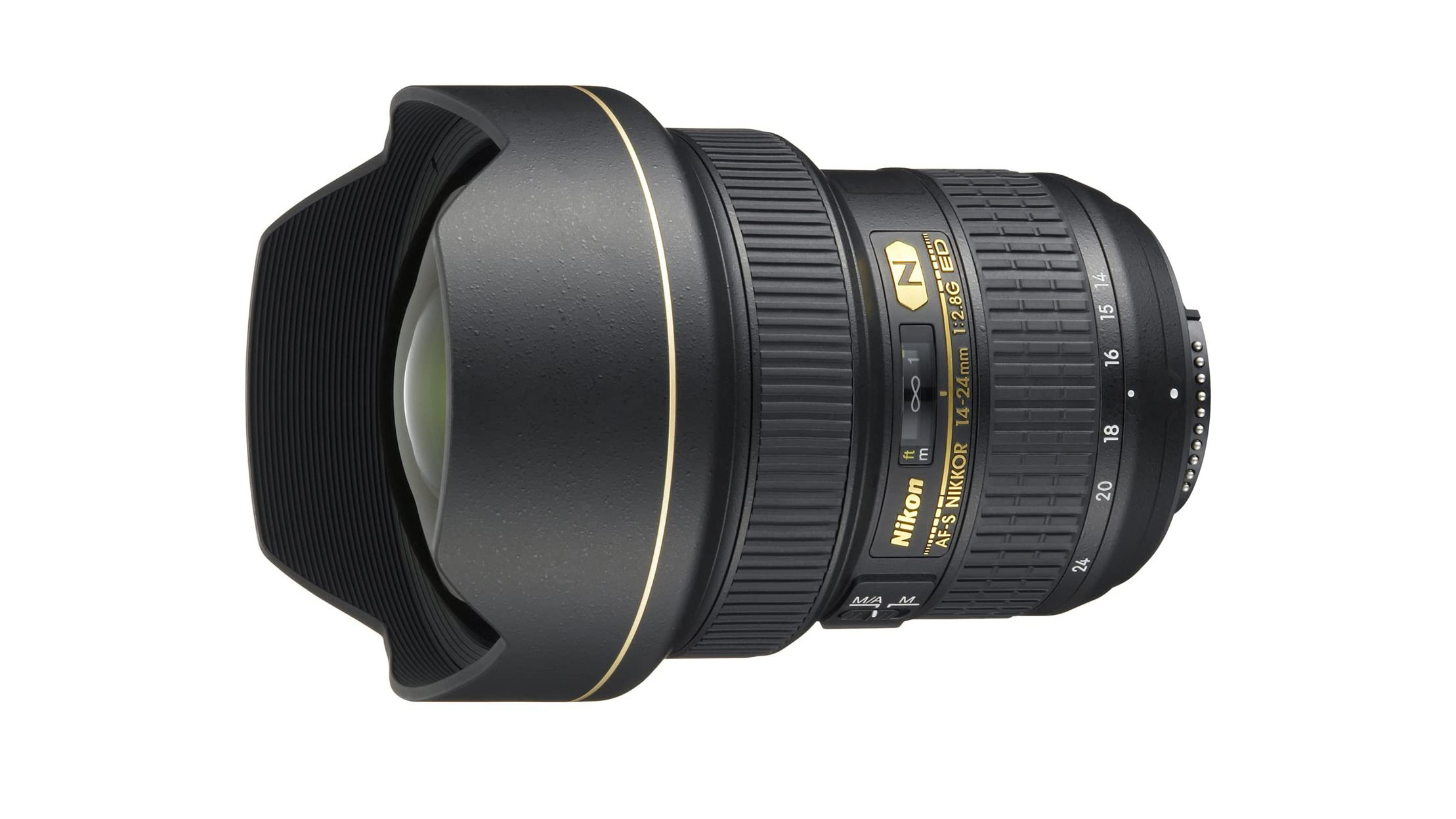
With its ultra-wide zoom range and fast, constant-aperture design, this Nikon FX-format lens was a world-first when information technology was launched back in 2008. Information technology's become something of a legend in its ain lifetime, but struggles to retain its crown against new Sigma 14-24mm and Tamron 15-30mm pretenders to the throne. The Nikon matches the Sigma zoom lens for maximum viewing angle and is slightly wider than the Tamron.
Optical highlights include two ED (Actress-low Dispersion) elements and Nano Crystal Glaze. A safe weather-seal is featured on the mounting plate simply the lens lacks a comprehensive set of weather-seals or a keep-make clean fluorine coating on the front end chemical element, equally featured on the Sigma and Tamron lenses.
Centre-sharpness is splendid but corner-sharpness at the shortest focal length and widest discontinuity lags behind that of the Sigma zoom, more on a par with the Tamron. Vignetting and barrel distortion are rather worse than in both other lenses. Coma and astigmatism are controlled very well, again similar to the Tamron lens just not quite equaling the operation of the Sigma.
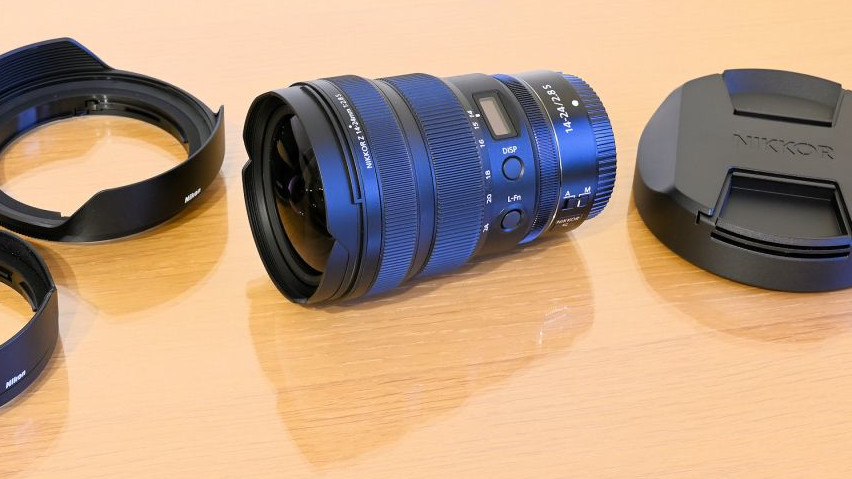
The Nikkor Z fourteen-24mm f/2.8 S is Nikon's latest try to attract pros to the Z mountain system. Completing the holy trinity of fast f/2.8 South-line zooms, information technology slots in neatly next to the Nikkor Z 24-70mm f/2.8 South and promises uncompromising wide-angle prototype quality. The 16-element optical stack includes 3 aspherical elements, along with Nikon'southward Nano Crystal and ARNEO Coat for reducing ghosting and flare.
As yous might expect, Nikon went all guns blazing with the pattern of this lens to try and sway photographers to the Z mount. Equally such, the build, handling and paradigm quality of this lens are all absolutely top-tier. Copiously weather-sealed, with scintillating sharpness, this is a lens for those who demand the best (and it comes with the kind of price tag you lot might look).
The front element gets a smear-resistant fluorine coating, and the lens is fully weather sealed. Add the included HB-98 lens hood and huge 112mm filters tin can exist used - Nikon offers Neutral Color and Circular Polarizer options.
All-time Sony lenses for astrophotography
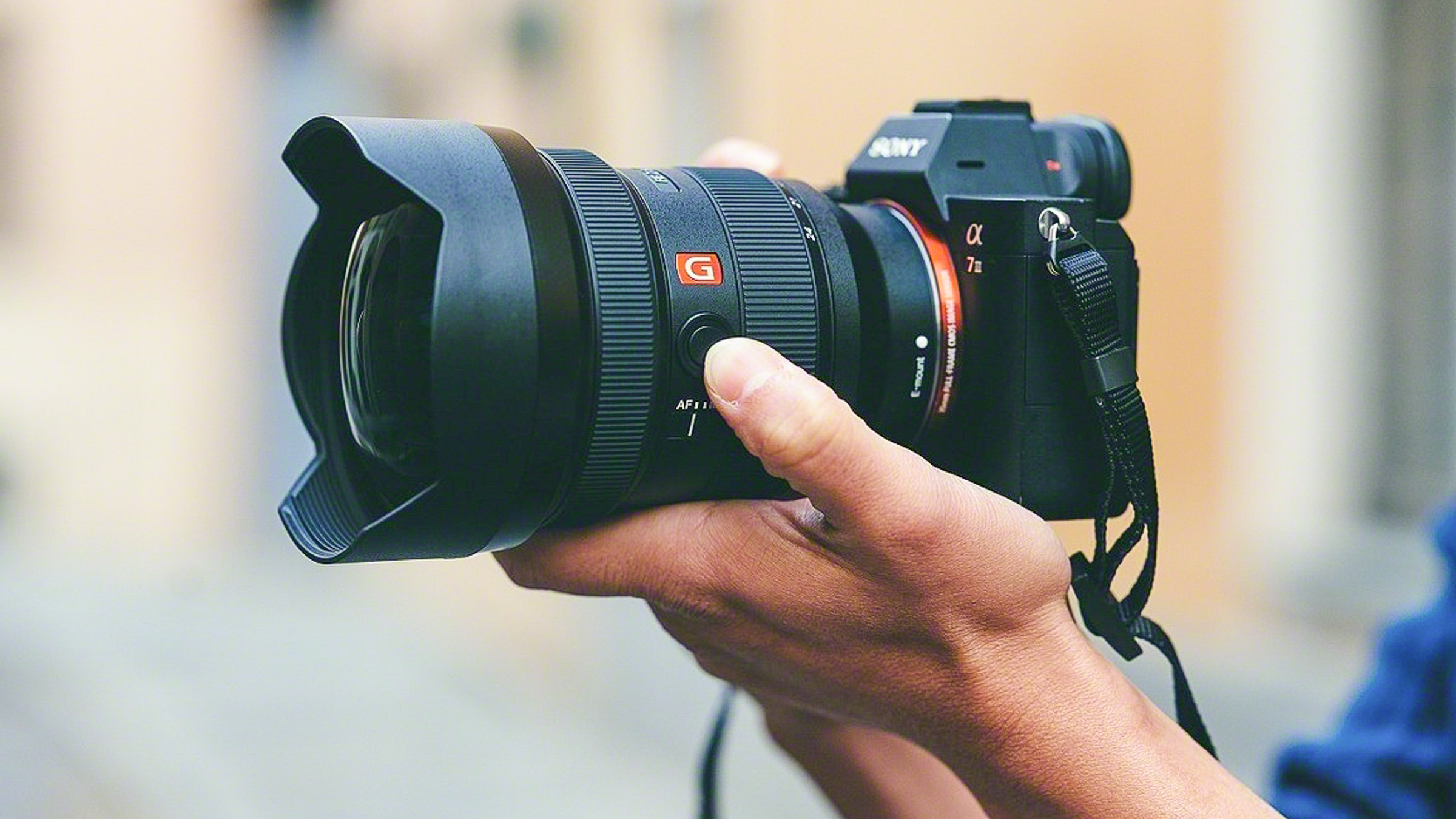
Just until recently, the Atomic number 26 12-24mm f/iv G has been Sony's most wide-angle zoom. Nevertheless, with a constant maximum aperture of f/four, it isn't suited to astrophotography. Pace forward the Sony Iron 12-24mm f/ii.8 G Master. Nosotros tested out this lens both in our lab and out in the field, and completely fell in honey. Its impeccable image quality and ultra-broad viewing angle makes it an outstanding option for astrophotography.
Boasting a diagonal coverage up to an incredible 122 degrees, while also delivering a fast and constant f/2.viii aperture, this combination makes it the world's fastest lens in its grade. At that place'due south no getting abroad from the hefty price, but this is a lens that delivers supreme image quality, while the AF system is quick, shine and quiet. Cistron in the lovely handling and rock-solid build quality and this is a stunning lens.
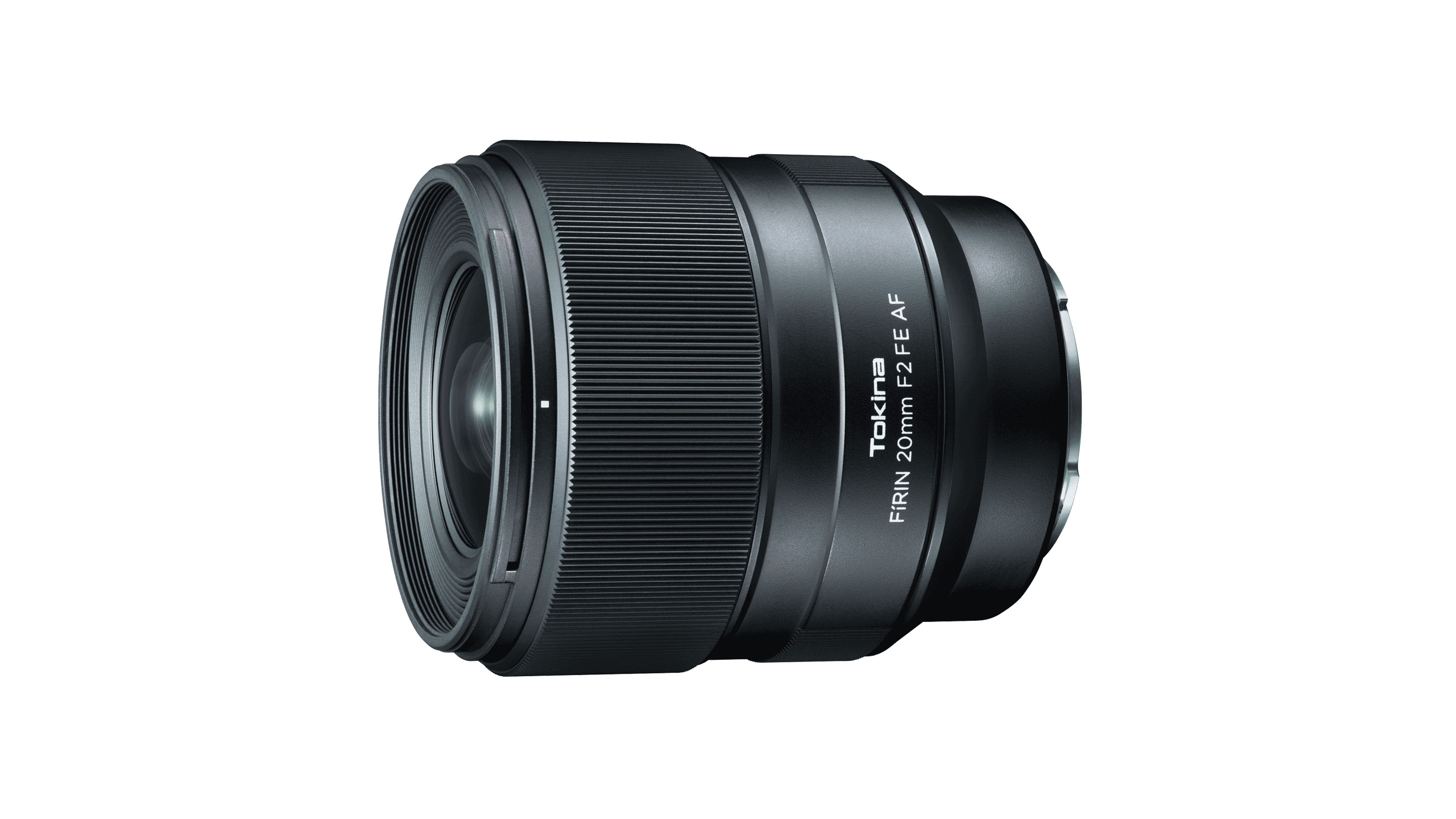
Designed for full-frame Sony E-mountain cameras, the Firin 20mm is bachelor in two versions, either with or without autofocus. This 'AF' autofocus version looks clean, simple and in-keeping with Sony mirrorless cameras. Autofocus is reasonably quick and more often than not very authentic. Information technology's definitely worth having for general shooting. When focusing manually, the large focus ring operates with smooth precision. Compared with the other lenses on this list, the Firin has a reduced viewing angle of 92 degrees, but its f/two aperture rating is faster than boilerplate.
Shooting wide-open, coma and astigmatism are credible towards the corners of frame, but narrowing the aperture by an f/stop cures the problem. Still there's no cure for the disappointing corner sharpness, which is especially poor until yous terminate downwards to f/4. There's remarkably footling color fringing, even at the extreme corners of the frame, and distortion is practically not-existent.
Overall the Firin is a fine lens, although its viewing bending tin feel a little restrictive for astrophotography.
All-time Fujifilm lenses for astrophotography
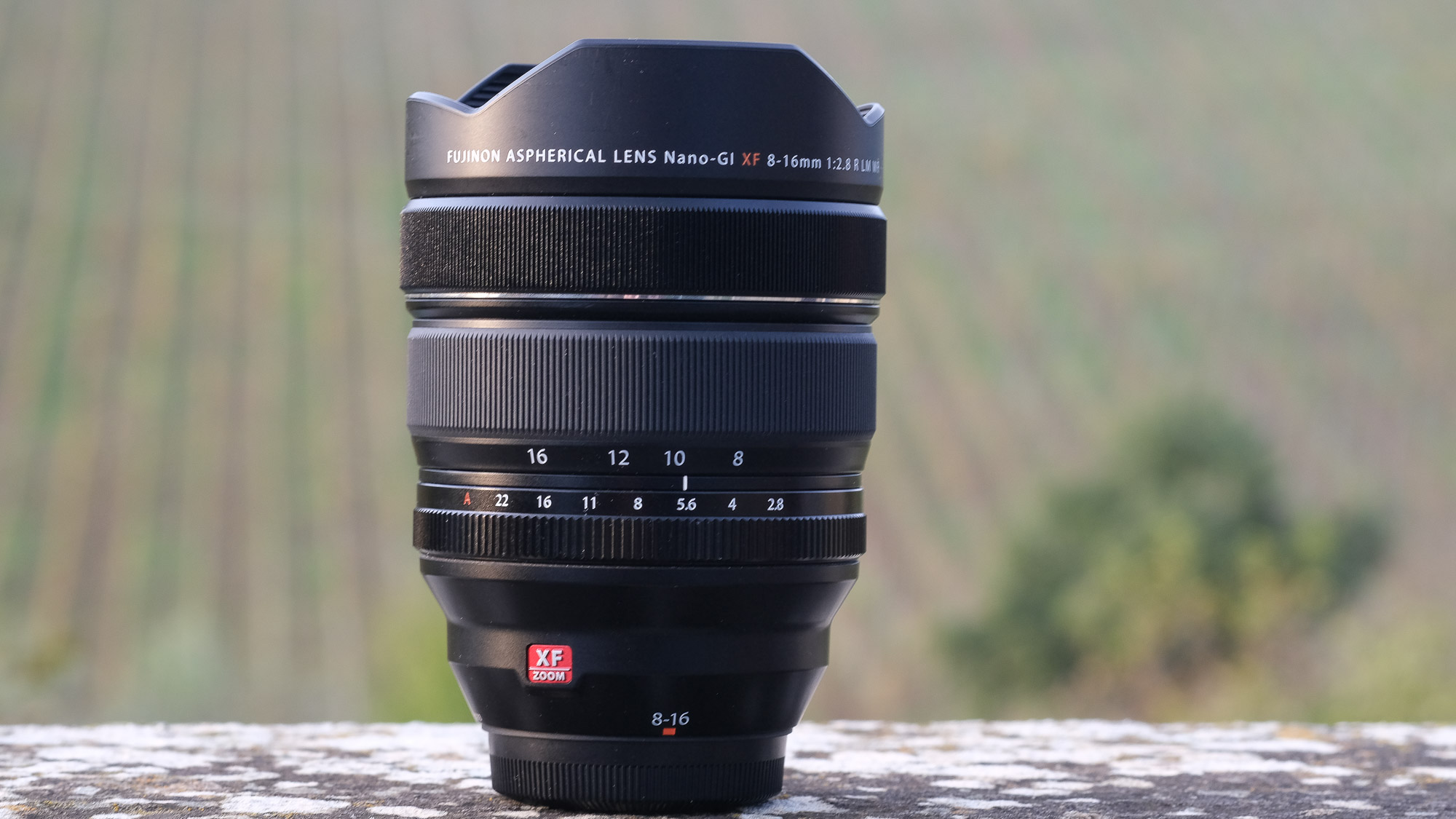
In 2019, Fujifilm debuted its widest lens yet, the Fujifilm 8-16mm f2.viii XF R LM WR Fujinon Lens. Its size and price tag put information technology firmly in the same campsite every bit the pro optics; weighing more than 800g, when it's paired with one of the larger cameras like the X-T3, this lens makes for a setup that calls the mirrorless reputation for lightness into question. Don't get united states wrong though, this is a fantastic lens, as we noted in our full review.
A sophisticated optical construction ensures pin-sharp image quality, while it also has an extra f-stop over its nearest comparison bespeak in the X stable, the 10-24mm (see below). Information technology's worth existence aware that the lens lacks optical image stabilisation of any kind, and its broad front makes it incompatible with screw-in filters. All the same, this is as wide as ultra-wide zooms get, with a full frame equivalent focal length of just 12mm at its widest setting!
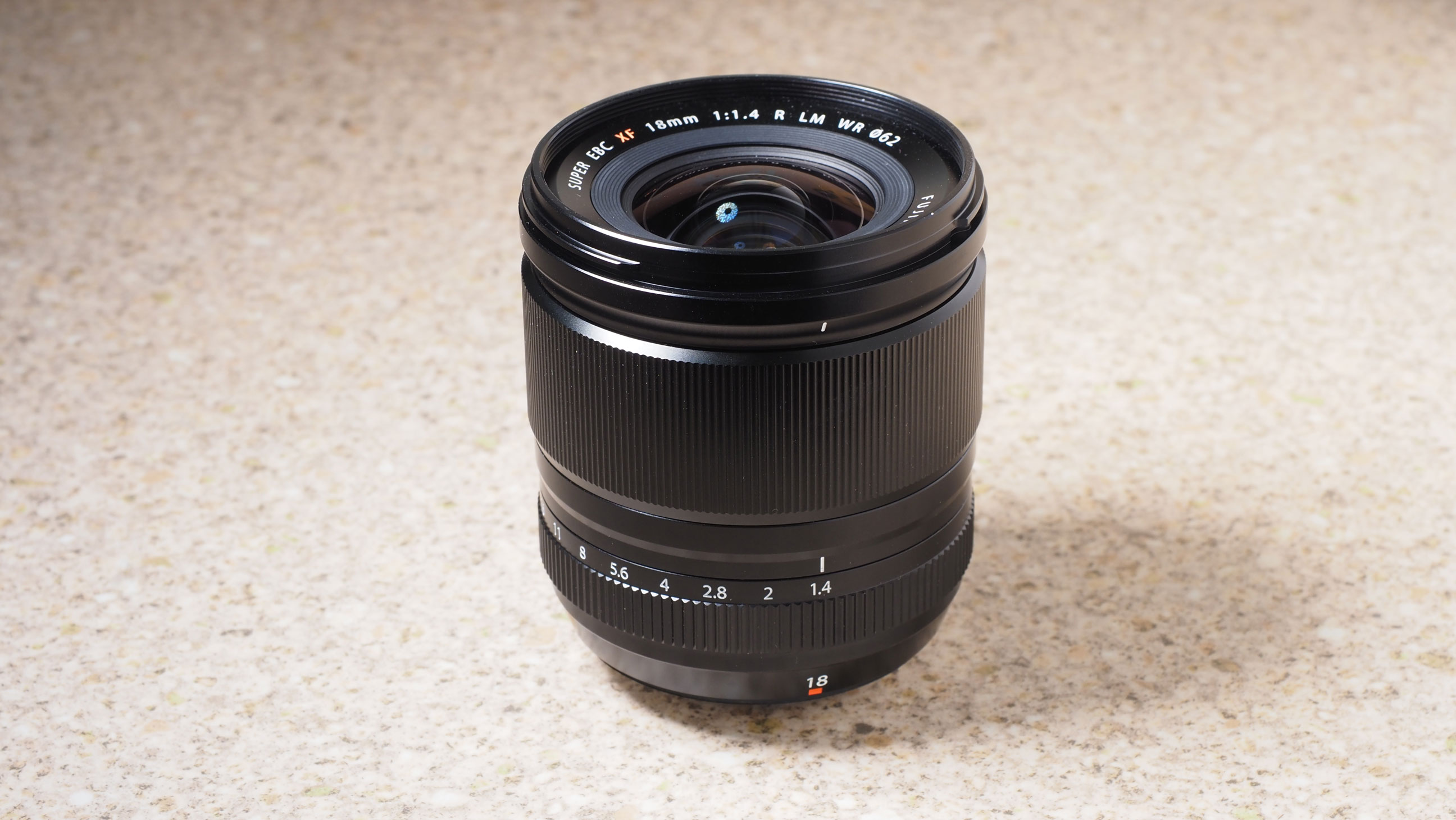
This is a pretty meaty and lightweight lens for a wide-bending f/i.4, and boasts a really neat design and an everyday 62mm filter mount. The optical performance is stellar, even wide open, though there is already a 16mm f/1.4 in the Fujinon lens range, then it feels as if this lens is squeezing into a gap that isn't quite there.
In that location'south no image stabilization, which we wouldn't expect in a fast prime anyway, but when we tested the lens we did find that in that location is an annoying 'clonking' sound from what nosotros think is the AF actuator when the lens is removed from the camera and its AF system is not existence powered.
How we test lenses
We test lenses using both real globe sample images and lab tests. Our lab tests are carried out scientifically in controlled conditions using the Imatest testing suite, which consists of custom charts and analysis software that measures resolution in line widths/motion picture height, a measurement widely used in lens and camera testing. We find the combination of lab and real-word testing works best, equally each reveals dissimilar qualities and characteristics.
Read more:• How to improve your astrophotography: tips, tricks and techniques
• Astrophotography tools: the best photographic camera, lenses and gear for shooting the night sky
• The all-time fisheye lenses
• The best binoculars
• The best telescopes for astrophotography
• The best CCD cameras for astrophotography
• The best star trackers for astrophotography
• Best head torch
Related manufactures
Source: https://www.digitalcameraworld.com/buying-guides/best-lenses-for-astrophotography
Posted by: guffeysche1949.blogspot.com

0 Response to "Will A Tokina F/2.8 Work On A Full Frame Camera"
Post a Comment